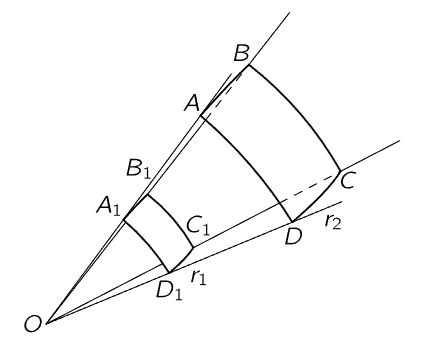
تاريخ الفيزياء

علماء الفيزياء


الفيزياء الكلاسيكية

الميكانيك

الديناميكا الحرارية


الكهربائية والمغناطيسية

الكهربائية

المغناطيسية

الكهرومغناطيسية


علم البصريات

تاريخ علم البصريات

الضوء

مواضيع عامة في علم البصريات

الصوت


الفيزياء الحديثة


النظرية النسبية

النظرية النسبية الخاصة

النظرية النسبية العامة

مواضيع عامة في النظرية النسبية

ميكانيكا الكم

الفيزياء الذرية

الفيزياء الجزيئية


الفيزياء النووية

مواضيع عامة في الفيزياء النووية

النشاط الاشعاعي


فيزياء الحالة الصلبة

الموصلات

أشباه الموصلات

العوازل

مواضيع عامة في الفيزياء الصلبة

فيزياء الجوامد


الليزر

أنواع الليزر

بعض تطبيقات الليزر

مواضيع عامة في الليزر


علم الفلك

تاريخ وعلماء علم الفلك

الثقوب السوداء


المجموعة الشمسية

الشمس

كوكب عطارد

كوكب الزهرة

كوكب الأرض

كوكب المريخ

كوكب المشتري

كوكب زحل

كوكب أورانوس

كوكب نبتون

كوكب بلوتو

القمر

كواكب ومواضيع اخرى

مواضيع عامة في علم الفلك

النجوم

البلازما

الألكترونيات

خواص المادة


الطاقة البديلة

الطاقة الشمسية

مواضيع عامة في الطاقة البديلة

المد والجزر

فيزياء الجسيمات


الفيزياء والعلوم الأخرى

الفيزياء الكيميائية

الفيزياء الرياضية

الفيزياء الحيوية

الفيزياء العامة


مواضيع عامة في الفيزياء

تجارب فيزيائية

مصطلحات وتعاريف فيزيائية

وحدات القياس الفيزيائية

طرائف الفيزياء

مواضيع اخرى
Energy of radiation
المؤلف:
Richard Feynman, Robert Leighton and Matthew Sands
المصدر:
The Feynman Lectures on Physics
الجزء والصفحة:
Volume I, Chapter 29
2024-03-19
1314
First of all, at any particular moment or in any particular place, the strength of the field varies inversely as the distance r. Now we must point out that the energy content of a wave, or the energy effects that such an electric field can have, are proportional to the square of the field, because if, for instance, we have some kind of a charge or an oscillator in the electric field, then if we let the field act on the oscillator, it makes it move. If this is a linear oscillator, the acceleration, velocity, and displacement produced by the electric field acting on the charge are all proportional to the field. So the kinetic energy which is developed in the charge is proportional to the square of the field. So we shall take it that the energy that a field can deliver to a system is proportional somehow to the square of the field.

Fig. 29–4. The energy flowing within the cone OABCD is independent of the distance r at which it is measured.
This means that the energy that the source can deliver decreases as we get farther away; in fact, it varies inversely as the square of the distance. But that has a very simple interpretation: if we wanted to pick up all the energy, we could from the wave in a certain cone at a distance r1 (Fig. 29–4), and we do the same at another distance r2, we find that the amount of energy per unit area at any one place goes inversely as the square of r, but the area of the surface intercepted by the cone goes directly as the square of r. So, the energy that we can take out of the wave within a given conical angle is the same, no matter how far away we are! In particular, the total energy that we could take out of the whole wave by putting absorbing oscillators all around is a certain fixed amount. So, the fact that the amplitude of E varies as 1/r is the same as saying that there is an energy flux which is never lost, an energy which goes on and on, spreading over a greater and greater effective area. Thus, we see that after a charge has oscillated, it has lost some energy which it can never recover; the energy keeps going farther and farther away without diminution. So, if we are far enough away that our basic approximation is good enough, the charge cannot recover the energy which has been, as we say, radiated away. Of course, the energy still exists somewhere, and is available to be picked up by other systems.
 الاكثر قراءة في مواضيع عامة في علم البصريات
الاكثر قراءة في مواضيع عامة في علم البصريات
 اخر الاخبار
اخر الاخبار
اخبار العتبة العباسية المقدسة

الآخبار الصحية















 قسم الشؤون الفكرية يصدر كتاباً يوثق تاريخ السدانة في العتبة العباسية المقدسة
قسم الشؤون الفكرية يصدر كتاباً يوثق تاريخ السدانة في العتبة العباسية المقدسة "المهمة".. إصدار قصصي يوثّق القصص الفائزة في مسابقة فتوى الدفاع المقدسة للقصة القصيرة
"المهمة".. إصدار قصصي يوثّق القصص الفائزة في مسابقة فتوى الدفاع المقدسة للقصة القصيرة (نوافذ).. إصدار أدبي يوثق القصص الفائزة في مسابقة الإمام العسكري (عليه السلام)
(نوافذ).. إصدار أدبي يوثق القصص الفائزة في مسابقة الإمام العسكري (عليه السلام)


















